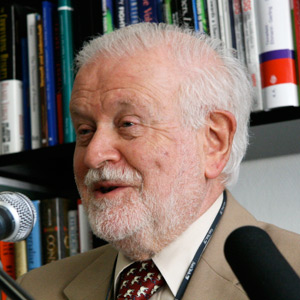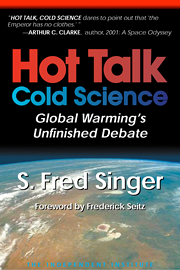Vice President Albert Gore, in the final days of the presidential race, has addressed the problem of global warming, his trademark issue. His advisors had soft-pedaled the matter, fearing negative reactions from autoworkers and others afraid of losing their jobs if Gore imposes drastic controls on the use of energy.
To reduce the risk of such a response, Gore arranged for “scientific cover” in the form of newspaper stories about the danger of future climate change. These stories were based on a fairly obvious leak of the summary of an unapproved draft report from the U.N. science group, the Intergovernmental Panel on Climate Change (IPCC). The Washington Post reported disingenuously that the story acted as a “spur” for Gore’s speeches which were delivered just a few hours later. What a coincidence! The New York Times admitted: “A copy of the summary ... was obtained from someone who was eager to have the findings disseminated.” In spite of the use of the passive voice, it’s not too difficult to figure out who took the initiative in leaking the summary (and perhaps supplied a helpful summary of the summary) to these papers and to the Associated Press.
One can understand why Gore’s advisors held back so long on mentioning global warming. Anyone familiar with Earth in the Balance, Gore’s 1992 book (reissued a few months ago), knows of its draconian policy recommendations, like abolishing the internal combustion engine and imposing punitive fuel taxes. An internal Gore campaign memo from 1992 flagged the book as a major Gore liability. Gore’s staff noted that “he has no sense of proportion. He equates the failure to recycle aluminum cans with the Holocaust—an equation that parodies the former and dishonors the latter.”
Gore’s energy restriction policies, embodied later in the internationally negotiated Kyoto Protocol, might give pause not only to business interests but also to the voting public, fed up with sky-high gas prices and rising heating costs. However, with Green Party candidate Ralph Nader snapping at his heels in crucial states, Gore decided to risk exposing the global warming issue, but reduce the risk by building on the IPCC scientific report.
There is just one problem. In spite of what the IPCC summary implies, temperature hasn’t warmed appreciably in the last 60 years, since showing a major rise between about 1880 and 1940. The evidence comes partly from weather satellites; it is independently confirmed by radiosondes carried aloft in weather balloons. The satellite results of the past 20 years are also validated by a January 2000 report published by the National Research Council of the U.S. National Academy of Sciences. Significantly, the NRC panel included the most severe critics of the satellite data.
But there is further evidence against recent warming. The U.S. National Climate Data Center, the governmental expert group, reports that the warmest years in the continental U.S. occurred around 1940, with no subsequent warming trend. A similar result applies to surface data from European weather stations. The warming apparently takes place elsewhere, mainly in far-off Siberia and in data-scarce tropical areas. There are good reasons to suspect the quality of these observations.
Still, one needs to look at all of the available evidence: non-thermometer “proxy” data from tree rings, corals, ice cores and ocean sediments can be brought to bear on the problem. I have personally examined such published records and found none that show a warming trend since about 1940. On the contrary, many show a slight cooling trend in recent years.
However, you might ask, what about glaciers melting, Arctic sea-ice cover shrinking, and sea level rising? Aren’t these signs of current global warming? Well, no. True enough, all these events are taking place; there is nothing wrong with the observations. However, the behavior of glaciers and sea ice is most likely a delayed effect, a consequence of the pre-1940 warming which makes glaciers and sea ice warmer now than they were 100 years ago. It simply takes a long time to melt ice. In the case of sea levels, they have risen by about 400 feet over the past 20,000 years, ever since the peak of the last ice age. Moreover, no matter what we do, sea levels will continue to rise for another 5,000 years or so as ice in the Antarctic slowly melts away.
Thus, overwhelming evidence, from well-controlled weather stations, satellites, balloon-borne radiosondes, and from proxy data and ice observations, speaks against those surface data that show a recent warming trend. Several of us, as official reviewers for the IPCC report, have raised these points but our arguments have evidently been ignored by the controlling group that wrote the summary.
Gore and like-minded ideologues are thus relying on a summary that does not reflect the uncertainties of the IPCC report itself and certainly does not do justice to the available scientific evidence. The real danger is not a putative global warming but policies based on junk science that will slow economic growth, destroy jobs, and hurt low-income groups in our population.









